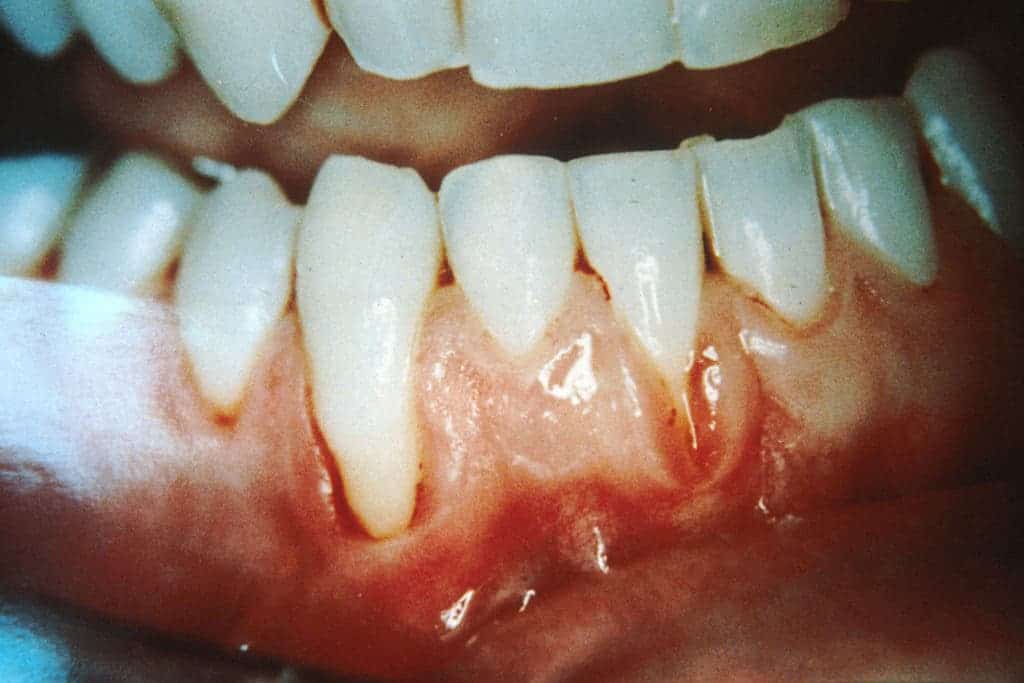Gingivitis causes the gums to become red, swollen, bleed easily — and, according to a new study, it might also cause Alzheimer’s when it goes untreated for decades.

It sounds incredible that something so low key, albeit annoying, as gum disease might be responsible for such a debilitating disease like Alzheimer’s that literally clogs your brain. However, evidence from multiple research groups is converging towards this conclusion.
After a certain age, the human brain starts to shrink considerably but surprisingly, not too many neurons die in the process. In the Alzheimer’s diseased brain, however, many neurons stop functioning, lose connections with other neurons, and eventually die.
In the early stage, the damage is confined to the entorhinal cortex and hippocampus, two areas associated with memory, navigation, and perception of time. This sort of degeneration leads to memory loss and disorientation associated with the condition — though it has to be noted that Alzheimer’s starts damaging brain cells well before the first symptoms kick in.
Alzheimer’s disease is widely believed to be caused by the accumulation of beta-amyloid proteins which clump together to form plaques between neurons and disrupt cell function. Another physical characteristic of the Alzheimer’s diseased brain is the buildup of tau proteins, which tangle inside neurons, blocking their transport system.
Could these protein plaques be simply byproducts of the brain’s defense mechanisms in the face of the real Alzheimer’s causing germ? Gum disease-causing bacteria such as Porphyromonas gingivalis (abbreviated Pg) have been found in the brains of people who had Alzheimer’s. What’s more, autopsies have shown that protein plaques can appear in people who had no Alzheimer’s disease.
Gum disease, which affects a third of all people, has been identified as one of the main risk factors for Alzheimer’s. Previously, researchers have shown that P. gingivalis causes inflammation in brain areas known to be heavily hit by Alzheimer’s, causing neural damage and amyloid plaques in healthy mice. And when mice that had been genetically engineered to have Alzheimer’s were infected with gum disease, their dementia symptoms worsen.
Now, researchers at Cortexyme, an American pharmaceutical corporation who has invested heavily in gum disease research, add even more weight to the gum disease-Alzheimer’s association.
“Infectious agents have been implicated in the development and progression of Alzheimer’s disease before, but the evidence of causation hasn’t been convincing,” said Stephen Dominy, M.D., Cortexyme co-founder and lead author on the paper. “Now, for the first time, we have solid evidence connecting the intracellular, Gram-negative pathogen, Pg, and Alzheimer’s pathogenesis while also demonstrating the potential for a class of small molecule therapies to change the trajectory of disease.”
In the new study, researchers examined the brains of 54 deceased individuals who had Alzheimer’s. They found toxins called gingipains produced by P. gingivalis in 96% of the samples and the bacterium itself in three samples. The most toxic enzymes were found in those with the worst cognitive decline — these samples also had more amyloid and tau protein accumulations.
The team also infected mice with gum disease, finding that the rodents acquired brain infection, along with tau and amyloid build up in regions normally affected by Alzheimer’s. When researchers exposed the mice to a substance previously developed by Cortexyme that blocks the production of gum disease-related toxins, infection was reduced and protein plaque accumulation stopped. Some damaged neurons even recovered.
Antibiotics also worked similarly well, but less effectively. Moreover, the bacteria eventually developed resistance but did not resist the gingipain blockers.
The authors of the new study published in Science Advances propose that Alzheimer’s develops when gingipains accumulate fast enough to cause a patient to show symptoms. Cortexyme’s gingipain blockers have passed initial safety tests and the company plans on launching a clinical trial soon that will investigate the drug’s effects on cognition. New Scientist reports that elsewhere, Australian researchers are working on a vaccine for P. gingivalis — if this vaccine prevents gum disease and Alzheimer’s at the same time, millions of people could be saved.
“We know diseases like Alzheimer’s are complex and have several different causes, but strong genetic evidence indicates that factors other than bacterial infections are central to the development of Alzheimer’s, so these new findings need to be taken in the context of this existing research,” Dr. David Reynolds, Chief Scientific Officer from Alzheimer’s Research UK, said in a statement.
“Maintaining good dental health is an important part of a healthy lifestyle, and while we don’t yet fully know the extent to which it can affect our dementia risk, the presence of a single type of bacteria is extremely unlikely to be the only cause of the condition.
“Drugs targeting the bacteria’s toxic proteins have so far only shown benefit in mice, yet with no new dementia treatments in over 15 years it’s important that we test as many approaches as possible to tackle diseases like Alzheimer’s. It’s important we carefully assess all new potential treatments, and this drug is currently in an early phase clinical trial to establish if it is safe for people. We will have to see the outcome of this ongoing trial before we know more about its potential as a treatment for Alzheimer’s.”






